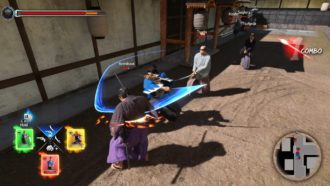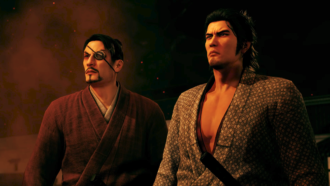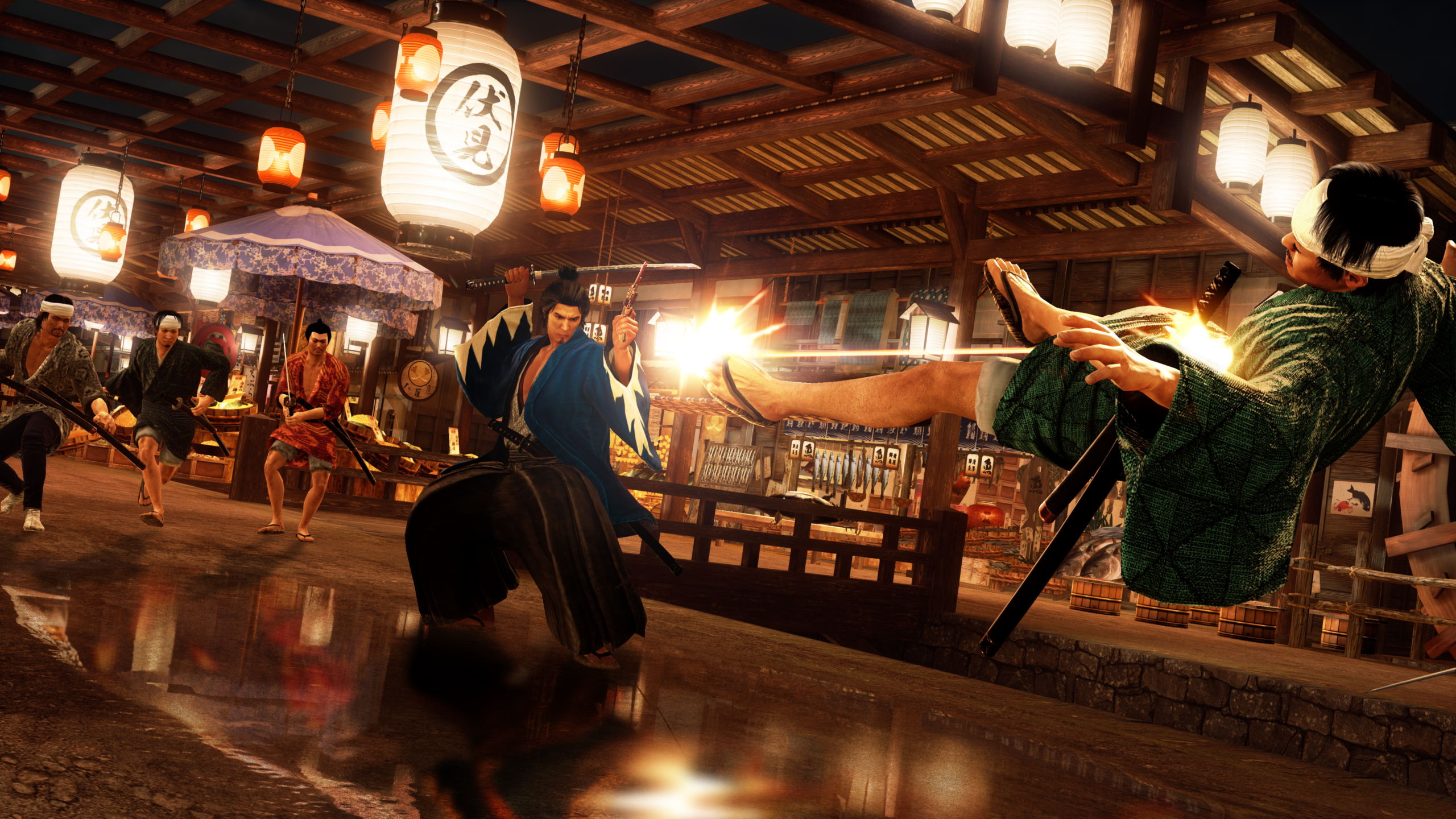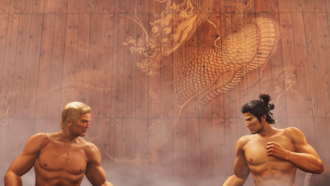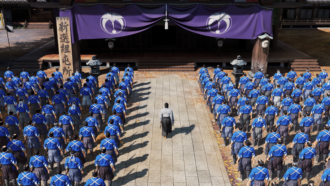Platforms:
Xbox One, PS4, PC, PS5, Xbox Series X|S
Released:
February 21, 2023
Publisher:
Sega
Developer:
Ryū Ga Gotoku Studios
The Like A Dragon (previously titled Yakuza) series is in its renaissance period. While we wait for the next mainline entry in next year’s Like a Dragon 8, the development team at Ryu Ga Gotoku Studios has decided to keep the franchise train rolling while at its peak. With this, Like A Dragon: Ishin!, the samurai-based affair, has arrived, serving as a remaking and reworking of the original 2014 game released only in Japan. It’s one of the series’ better stories and experiences, only slightly held back by a need for further polish.
An untraditional blood-soaked revenge story
Whilst still being in the Like A Dragon universe, Ishin! is set in the mid-1800s in Japan within the Bakumatsu and Edo periods. Players control a samurai named Sakamoto Ryoma on a journey to Kyoto on the hunt for his father’s killer. The only thing our hero has to go off is the very combat type that the killer used. Tracing that, Ryoma finds leads in the ronin group the Shinsengumi. Before long, he has to befriend and infiltrate the group, finding answers but also quickly becoming included in political tension, violence and (as expected for the franchise) betrayals.
At first glance, Like A Dragon: Ishin! appears as a very generic samurai revenge story. It takes a little bit to get going, but once you hit about the third chapter, the story is turned on its head. Ryoma is something of a nobleman, searching for the right answer through diplomacy. As such, he finds blending in with the ronin family, a group that solves everything with murder and blood, a formidable challenge. The story will also open itself up to more conspiracies and engaging revelations. The body count will climb as intense infighting occurs within the family as distrust grows, with accusations of imposters being thrown around. There truly are moments in Ishin’s story that refuse to let up on their stakes. The only brevity to follow these moments is those found in resolving thrilling boss fights or the opportunity to roam around Kyoto.
What is more enriching in these deep narrative moments is that technically you may have seen a majority of these characters before. Despite being set hundreds of years prior to the main Like A Dragon events, the cast’s counterparts are that of the original characters. Ryouma is essentially Kazuma Kiryu. Key figures like Majima, Saejima, Akiyama and so on will each appear as their counterpart in the Edo-verse. As someone that’s played just about every series entry (there are over a dozen at this point!), it’s rewarding and engaging to see characters from entirely different games interact in ways they normally wouldn’t get to. Juxtaposing this, newcomers will learn of the traditional cast’s deal and archetypes through Ishin as the characters plays roles that aren’t too dissimilar. People needn’t worry; Majima’s counterpart in Ojita is the same charming loose cannon he always is.
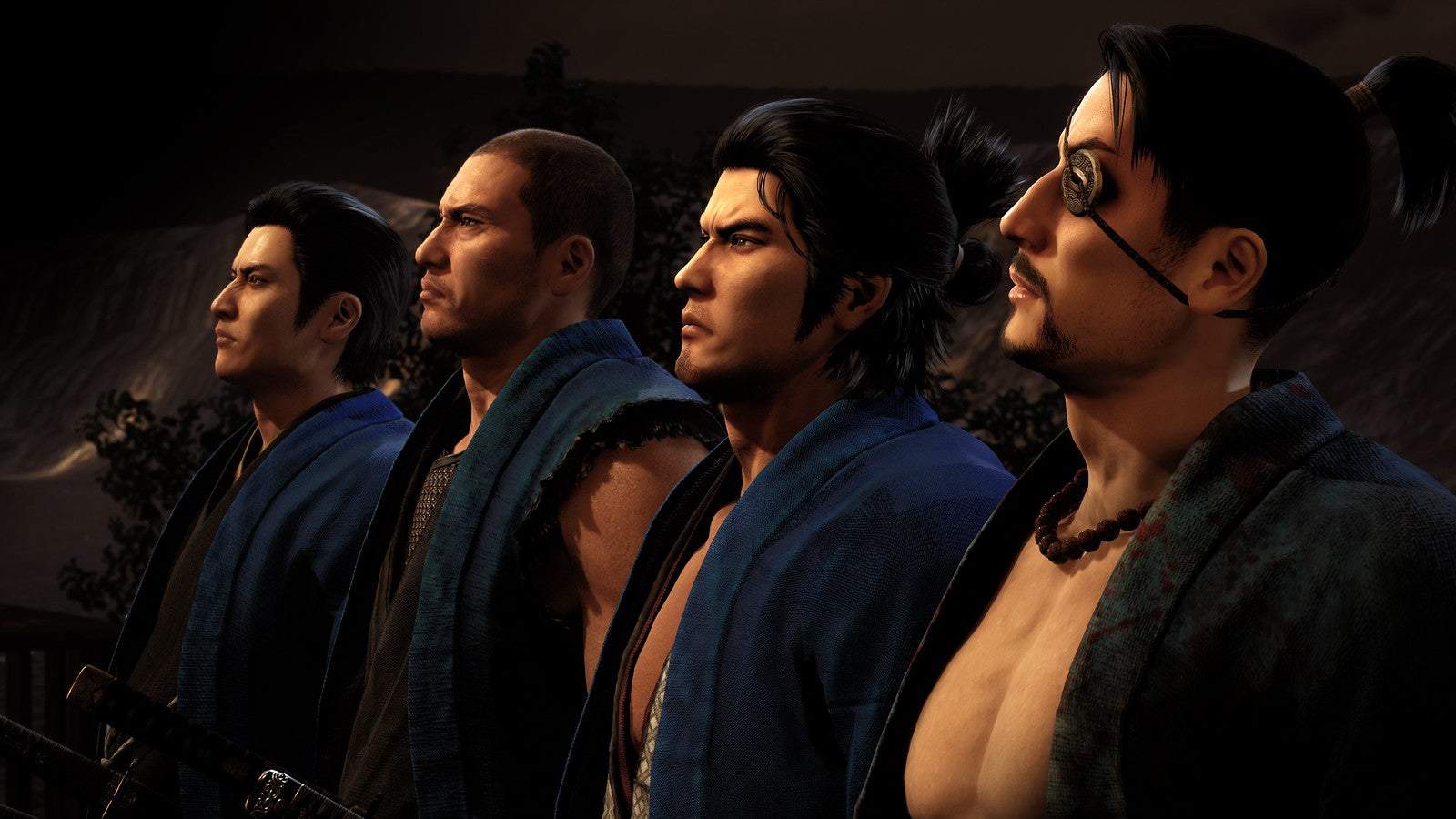
Wrapping up my time with Like A Dragon: Ishin! took about 30 hours with some generous amount of exploring and side activities. It’s on the higher end of the spectrum for quality stories in the franchise and I’m glad. My worries that lingered during a slow start soon dissipated, leaving for a joyous and delightfully cinematic samurai story to engage with.
Losing yourself in the Kyoto streets
Like A Dragon: Ishin! continues the series-long tradition of providing an immersive urban world for players to explore. This time city markets, temples and seaside docks collide in engaging ways, with strips and alleys snaking around each other to create engaging off-the-beaten-path routes. Here, you’ll be no stranger to more unique eateries and stores, along with weirdo characters engaging you in the many, many sub-stories on offer. As always, they will be populated quite well, leaving players feeling immersed as they brush up against passersby.
Ishin! also steps away from their usual in-house engine of the Dragon Engine and instead developed the game using Unreal Engine 4. In an interview with Crunchyroll, they explained this is due to this being a more suitable avenue for creating gorgeous day scenes. That has absolutely been the case here. As something of a big Kiryu fan myself, it’s endearing and invigorating seeing the pretty protagonist soak up some rays in high definition, wandering the streets and alleys.
However, that immersion at times reaches a ceiling. It seems the quick turnaround of games in the series has somewhat caught up with Ryu Ga Gotoku Studios. It’s no launch day Cyberpunk 2077 type deal, but my experience on PS5 certainly had bugs in the form of NPCs taking weird pathing, clipping through the floor and walls. Texture pop-ins will occur relatively often as you transition from a loading screen to gameplay. Some instances even had enemies spawning above and on top of Ryoma the moment a battle kicked off.
With how hard the team works to get these releases out (last year was the first since 2015 that we didn’t see a game in the series, main or otherwise), this type of release was somewhat inevitable. Still, it’s quite a patchable issue that won’t dampen the experience too much. When you’re as consistent a franchise as this, you’re bound to waver even a little bit from time to time. Last time it was Lost Judgment, but for different reasons.
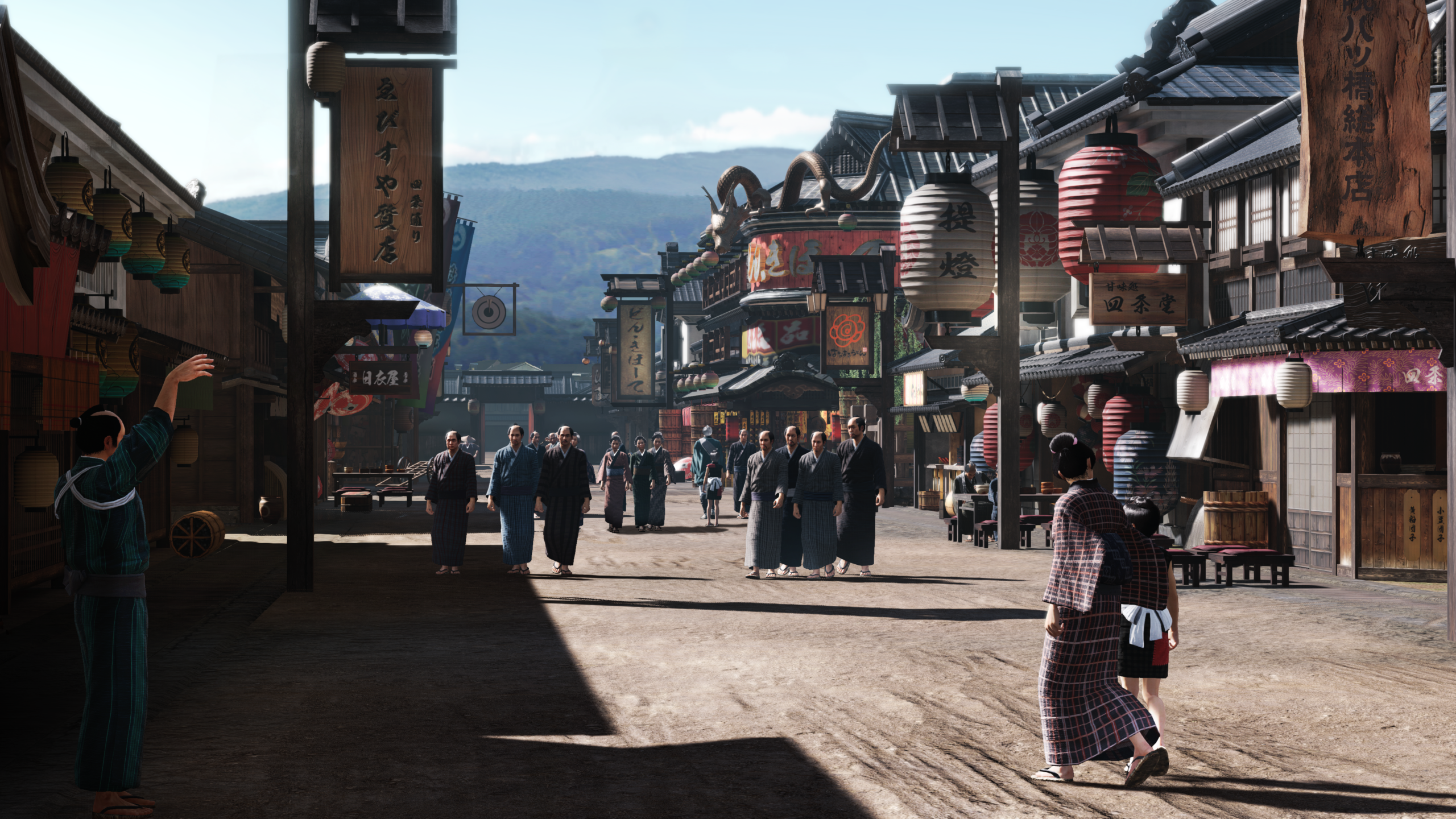
Like Kiryu before him, Ryoma is a man of the people. The sub-stories reflect this well and though there’s obviously not the modern surroundings to work with, these stories get good mileage out of their feudal Japan setting.
You’ll engage in charming hijinks such as helping a kid convince his vegetable-hating mother to let him eat vegetables (yes, not the opposite), identifying a mochi thief in a line-up of men with contradicting alibis and constantly helping a wannabe samurai up with healing items every time he gets knocked on his behind.
Minigames are once more aplenty. The rhythm-based dancing and (unplugged) karaoke return with a twist of authentic instrument usage in Kaito drums and lutes. Feel like your Ryoma’s a betting man? You can take to the chicken races or gambling dens. Maybe you even want to sweat it out in the Udon shop, delightfully engaging in quick dishing and serving of bowls to your patrons.
As all games should, there’s now a farm that you can return to between quests and check in on your harvest. This is manned by Haruka, the same counterpart and namesake of the young girl Kiryu essentially adopts in the main series. This is the closest you get to partake in a career in Ishin! It may not be a big moneymaker the way that the business management sim of Yakuza: Like A Dragon was, but it’s a wonderful way to kill time. Getting to hang out with Haruka in nice little moments the way you would in the original Yakuza, even cooking the ingredients you’ve prepared and playing with your adopted dog and cat is so warm and homely.
Strong stories aside, minigames and similar distractions are always the heart and soul of the series and some of the offerings here are better than ever. I just wish some of them were introduced a little earlier rather than only being uncovered by various quests only accessible after x chapter. Ishin! should be as smooth as possible an onboarding point for eager players. Letting people get more of the good stuff sooner would’ve gone a long mile.
Fulfilling your samurai dreams
Like A Dragon: Ishin! returns to its more real-time brawler approach than the recent turn-based affair. It has four stances in Swordsman, Gunman, Wild Dancer (a combination of wielding both a pistol and blade) and the traditional brawler. The quickest moving of these is Wild Dancer which is undeniably the coolest to play through. Sword flurries and rapid gunfire blend together in harmony while you loosely dodge and circle around your foes. Swordsman is a heavy hitter who can tacitly skewer and puncture grouped-up enemies if wielded correctly. The gunman is all about lining up long shots and keeping your distance, welcome brevity. Of course, brawler is there if you want to resolve things with your fists and a thrown table, chair or two.
Engaging in the relevant skill trees and training for each stance further immerses you as the samurai destined to defeat all as you visit dojos, picking up new moves. Traditionalist brawling and swordsman techniques are taught to you by wise, elder ronin. Lethal gunman moves are taught by an American, indicative of their obsession with trying to further modernise and civilise feudal Japan. This further immersed me in Ishin!’s world and I’m also thankful that being an all-rounder pays off, as I unlocked cooler moves the further I progressed in each tree, never plateauing in quality.
A new addition has arrived in combat in Trooper Cards. During a battle, you can use these abilities (laid out to you as cards and mapped to the d-pad) to turn the tides in your favour. They can perform feats such as free bonus heals and extra damage, but some also come with unique, powerful attacks. The ability to summon a devastating attack from a tiger or bear, or send out strong winds to push enemies back are just some of what I was able to achieve.

These cards won’t be for everyone and will make the screen too busy and a bit too breezy for those wanting a refined, tough experience. I didn’t take too much issue with them other than the fact the troops that make up these cards are more than just believable characters Edo-set characters. AEW Wrestler Kenny Omega, The Haunting of Bly Manor and Midnight Mass actor Rahul Kohli… even a Vtuber are just some of who you can summon. Even considering this is Like A Dragon, a series that’s known for its kooky factor, I found this at times a tad too distracting, affecting immersion in its world.
Thankfully, RGG Studio knows this feature is divisive in nature and confirmed this can be ignored by just frankly not equipping any cards. If you are keen on the feature though, be prepared to wait. I didn’t receive this function until about 10 hours into my affair with Ishin!, another instance of slow rolling out of mechanics.
Like A Dragon: Ishin! still remains a riotous game to knock some heads together and cut up a few foes. I always liked the way the franchise handled QTEs, providing intense, cinematic flashes in climaxes and trying moments of battle as you desperately try to get off a prompt in time. In a blood-drenched samurai setting, those QTEs are given more oomph, truly feeling the devastating effect you’re dolling out. The same can be said by the ultra-cool Heat actions that happen when one fulfils a combat requirement, resulting in cool takedowns.
8
Great
Positive:
- Story is full of intriguing conflicts, betrayal and themes
- Kyoto is home to some of the best minigames and substories
- Each combat stance is diverse with strategy, with Wild Dancer being a standout
- An immersive, gorgeous and cinematic experience
- It's thrilling see so many familiar franchise faces again
Negative:
- A handful of bugs that can be distracting
- Narrative and dolling out of mechanics are a little slow to start
- Trooper Cards won't be for everyone
Like A Dragon: Ishin! has a bit of ironing out to do before it becomes the amazing game it deserves to be. Players may notice it is the least polished game in the series in some time, and be tested by a slow start to the narrative and rolling out of mechanics to engage in chaotic fun. It’s worth sticking it out though. It’s one of the better stories to come from the franchise, with gripping inner and political conflict, where steel collides and wounds (both physical and emotional) cut deep. Kyoto too is home to some of the better instances of minigames and sub-stories, getting good mileage out of its feudal Japan setting. Living out your samurai life is palpable and thoroughly enjoyable as you cut down anyone who stands in your way in engaging combat. Like A Dragon: Ishin! may not be an all-timer for the series, but it’s definitely the title with the best vibes.

